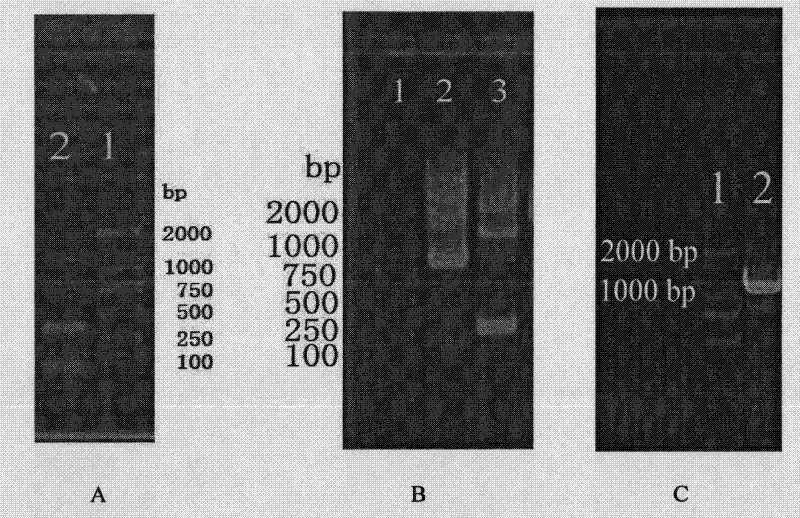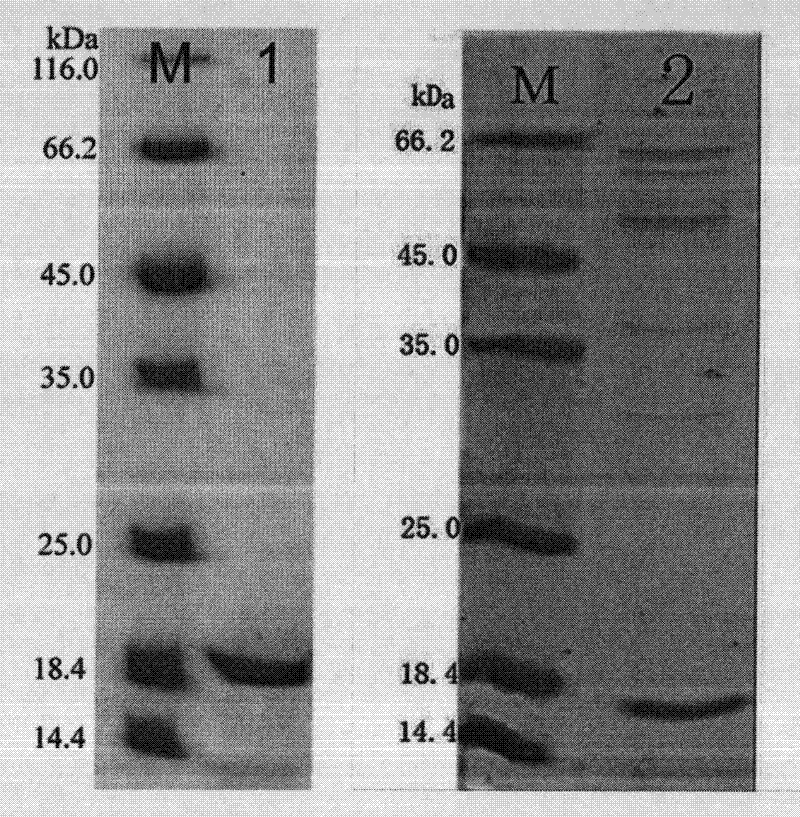Deep sea elastase gene as well as preparation method and application thereof
A technology for elastase and strain preservation, applied in the direction of microorganism-based methods, botany equipment and methods, biochemical equipment and methods, etc., can solve the problems that there is no M23 family elastase, achieve great application potential and ensure safety sexual effect
- Summary
- Abstract
- Description
- Claims
- Application Information
AI Technical Summary
Problems solved by technology
Method used
Image
Examples
Embodiment 1
[0037] Example 1: Cloning of the gene encoding cold-adapted elastase
[0038] 1. Extraction of genomic DNA of Pseudoalteromonas sp. CF6-2.
[0039] The extraction method is carried out according to the following steps and according to the instructions of the Genome Extraction Kit of Biotec Company:
[0040] (1) Take 1ml of Pseudoalteromonas sp. CF6-2, centrifuge at 10000rpm for 30sec, discard the supernatant, and collect the bacteria;
[0041](2) Add 200 μl of buffer KB to resuspend and wash the cells, centrifuge at 10,000 rpm for 30 sec, discard the supernatant and resuspend the cells in 200 μl of buffer KB by shaking or pipetting;
[0042] (3) Add 200 μl of binding solution CB, mix well, then add 20 μl proteinase K (20 mg / ml) solution, mix well, and place at 70°C for 10 minutes;
[0043] (4) After cooling, add 100 μl of isopropanol and mix thoroughly to obtain a mixed solution;
[0044] (5) Add the mixed solution prepared in step (4) into the adsorption column AC, centrif...
Embodiment 2
[0082] Example 2: Purification of cold-adapted elastase secreted by psychrotroph CF6-2
[0083] Pyrotrophic bacteria CF6-2 was inoculated in the fermentation medium (artificial seawater (prepared according to the seawater preparation method of Qingdao Haizhishui Aquarium Technology Co., Ltd.) containing 0.2wt% yeast powder and 0.3wt% elastin (purchased from sigma company) , 0.5mM CaCl 2 and 0.5mM Na 2 HPO 4 , pH 8.0), cultivated at 15°C for 48h. The fermentation broth was centrifuged at 10000 g for 10 min at 5 °C. The supernatant was dialyzed overnight with 50 mM Tris-HCl buffer (pH 9.5) and centrifuged at 10000 g for 15 min at 5°C. The supernatant was passed through the DEAE-Sepharose Fast Flow chromatography column at a speed of 2.5 min / ml, and then gradient eluted with 0-0.3M NaCl. The protease under elution detects purity with 12.5% SDS-PAGE (results such as image 3 shown).
Embodiment 3
[0084] Example 3: Determination of properties of cold-adapted elastase
[0085] 1. The ability of cold-adapted elastase to lyse different types of bacteria
[0086] After the test cells were centrifuged at 10000 rpm for 1 min, the supernatant was discarded, and the cells were washed with 50 mM Tris-HCl buffer solution (pH 9.0). The washed cells were resuspended in 50 mM Tris-HCl buffer (pH 9.0) and boiled for 20 min. After cooking, dilute the sample with the same buffer solution until the absorbance at 595nm is 0.8, take 180μl of bacterial solution and add 20μl of cold-adapted elastase enzyme solution with a concentration of 10μg / ml, mix well, keep it at 25°C for half an hour, and measure the absorbance at 595nm Value changes, the control sample was replaced by Tris-HCl buffer solution. Absorbance value reduction rate was used as relative bacteriostasis activity (results are shown in Table 1).
[0087] Table 1
[0088]
[0089] 2. Analysis of the cleavage site of cold-a...
PUM
 Login to View More
Login to View More Abstract
Description
Claims
Application Information
 Login to View More
Login to View More - R&D
- Intellectual Property
- Life Sciences
- Materials
- Tech Scout
- Unparalleled Data Quality
- Higher Quality Content
- 60% Fewer Hallucinations
Browse by: Latest US Patents, China's latest patents, Technical Efficacy Thesaurus, Application Domain, Technology Topic, Popular Technical Reports.
© 2025 PatSnap. All rights reserved.Legal|Privacy policy|Modern Slavery Act Transparency Statement|Sitemap|About US| Contact US: help@patsnap.com



